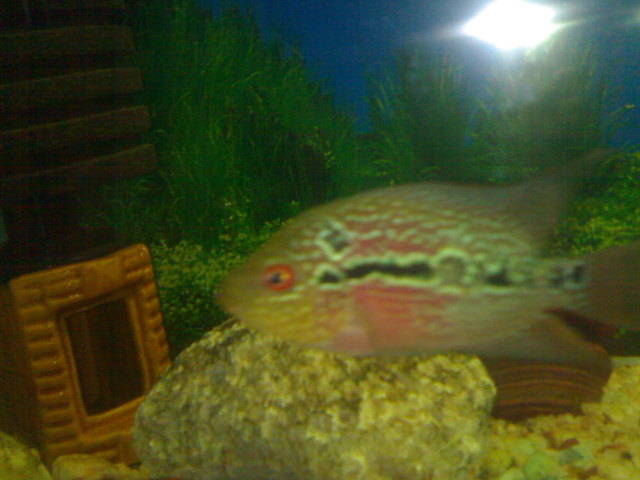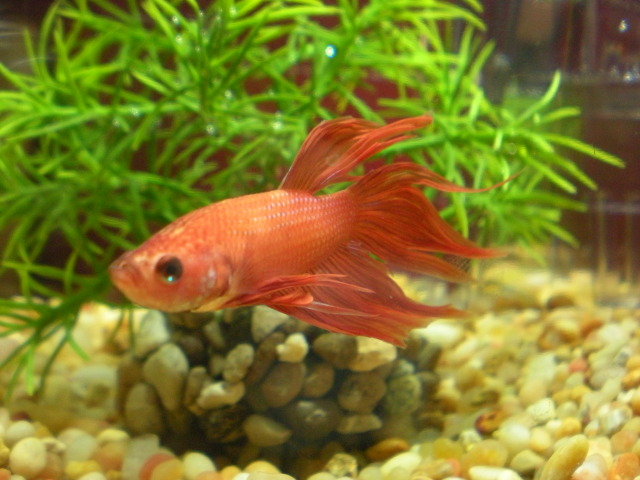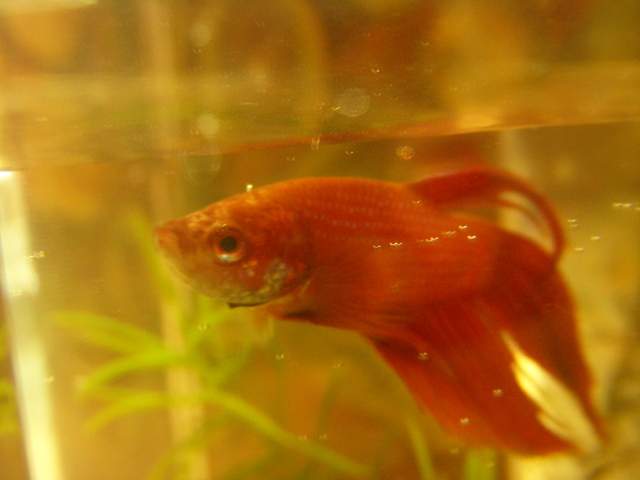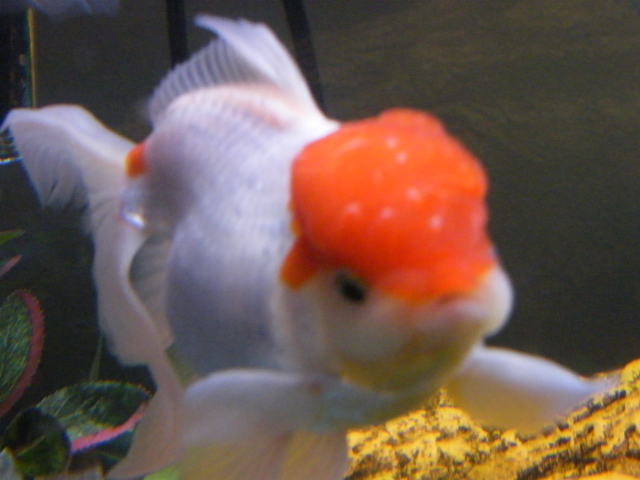QuestionI have to gold fish, I don't know exactly what kind but they are white and dark orange with there tails split into two long wavy fins. I have had the tank set up for 2 months now and it is about 3 gallon. I only have a small filter pump.
My question is, one of the smaller fish used to have a black spot on its tail for a couple of weeks but now it is gone, does this mean that it is going to die soon or that maybe it is sick?
AnswerHi Robert;
Black on fins and/or body that fades with time is usually from toxic nitrite and/or ammonia burns. (If it didn't go away I would suspect cancer). These toxins develop during the break-in period. Your tank has just finished with it and should now be fully cycled. The black is like scabs that are healing. Often, we can't even detect the toxin that caused it anymore because it is gone once the black shows up.
Make water changes of 25% every week to keep things clean. Goldfish get big and are pretty messy fish. These two little fellas will need a 10 gallon tank soon, then larger as they grow. Lots of them are kept in small tanks but they often don't survive more than a few months. If you see black on the fins again, make more water changes and get a bigger tank. It means the filter can't keep up with their waste and toxins have risen again.
Here is my article about new tanks to help you understand the whole crazy process;
**********
New Tank Syndrome or Break-in Period
So you have a new tank and you filled it up, put the filter together, mounted the heater into place and turned on the lights. You have all the plants and decorations where you want them....
You are ready for fish.
But, your filter is not ready for a full tank of fish yet.
The filter is running and moving the water and cleaning out crud, right? Of course!
But a very important part of your filter is the part you can't see. An aquarium filter removes the larger visible stuff, but it also must remove the dissolved fish waste that turns into ammonia in the water. To do this, special bacteria must grow in the filter system and on the particles of gravel in the bottom of your tank. This process occurs even on a limited scale in little fish bowls that have no filter in them.
This is "New-Tank Syndrome" or the "Break-in Period". The entire process takes 6 to 8 weeks to complete because these "nitrifying" bacteria grow quite slowly.
Start off with only two hardy fish for every ten gallons of water and don't add more until the 6 to 8 weeks has gone by. Hard to be patient, but it is worth it to keep your fish alive and healthy. As a matter of fact, the bacteria cannot develop without fish in the tank. You can let that tank sit forever without fish in it, but as soon as the first fish goes in the process begins. Avoid changing the filter pads during break-in. This removes the bacterial colonies that are essential to a balanced aquarium. You can rinse the filter pad out in a container of aquarium water. This will preserve most of the bacteria colonies while still allowing your filter to flow freely. Even using bacteria additives and water conditioners when you first set up the tank will not make a tank cycle by itself. If there are no fish to provide food (fish waste) for the bacteria, the beneficial bacteria cultures will die and you will have to start the colonies all over again once fish are added to the tank.
Feed your new fish VERY lightly. Any excess food will cause additional waste your system cannot afford to have right now. If you see food floating around or lying on the plants and gravel after five minutes, too much food is going into the tank. Cut back a little each time you feed until it is ALL gone 5 minutes after you feed them.
During this "break-in period" your tank will become cloudy and milky looking. You may have to tolerate this for the entire break-in period but it is only temporary. Changing 25% of the water three times a week until the break-in period is over helps a great deal. Changing water reduces the ammonia and nitrites that rise while the bacteria continues to multiply. If ammonia and/or nitrites become too high, your fish will become stressed and possibly die. Use a good water conditioner when you replace the water and make sure it is the right temperature to avoid shocking your fish.
When the break-in period is over, do regular water changes and vacuum the gravel at the same time. A change of 25% every one to two weeks is a good rule of thumb. It simply needs to be done for healthy fish.
Following these guidelines will help you get your new tank on the right track.
**********
Followups welcome.
At Your Service;
Chris Robbins

 hump head
QuestionQUESTION: i am having four flowerhorns, each of
hump head
QuestionQUESTION: i am having four flowerhorns, each of
 I Think I made my Flowerhorn Really Sick
Question
sick flowerhorn
Hia Ron,
Ok let me just
I Think I made my Flowerhorn Really Sick
Question
sick flowerhorn
Hia Ron,
Ok let me just
 New Betta Antics
Question
Miso
Hello!
I just got my first betta after
New Betta Antics
Question
Miso
Hello!
I just got my first betta after
 Swim Bladder Disorder???
QuestionJack
QUESTION: My betta fish is bloated.
Swim Bladder Disorder???
QuestionJack
QUESTION: My betta fish is bloated.
 Fancy Goldfish problem
QuestionGoldfish with white fl
QUESTION: First,
Fancy Goldfish problem
QuestionGoldfish with white fl
QUESTION: First,